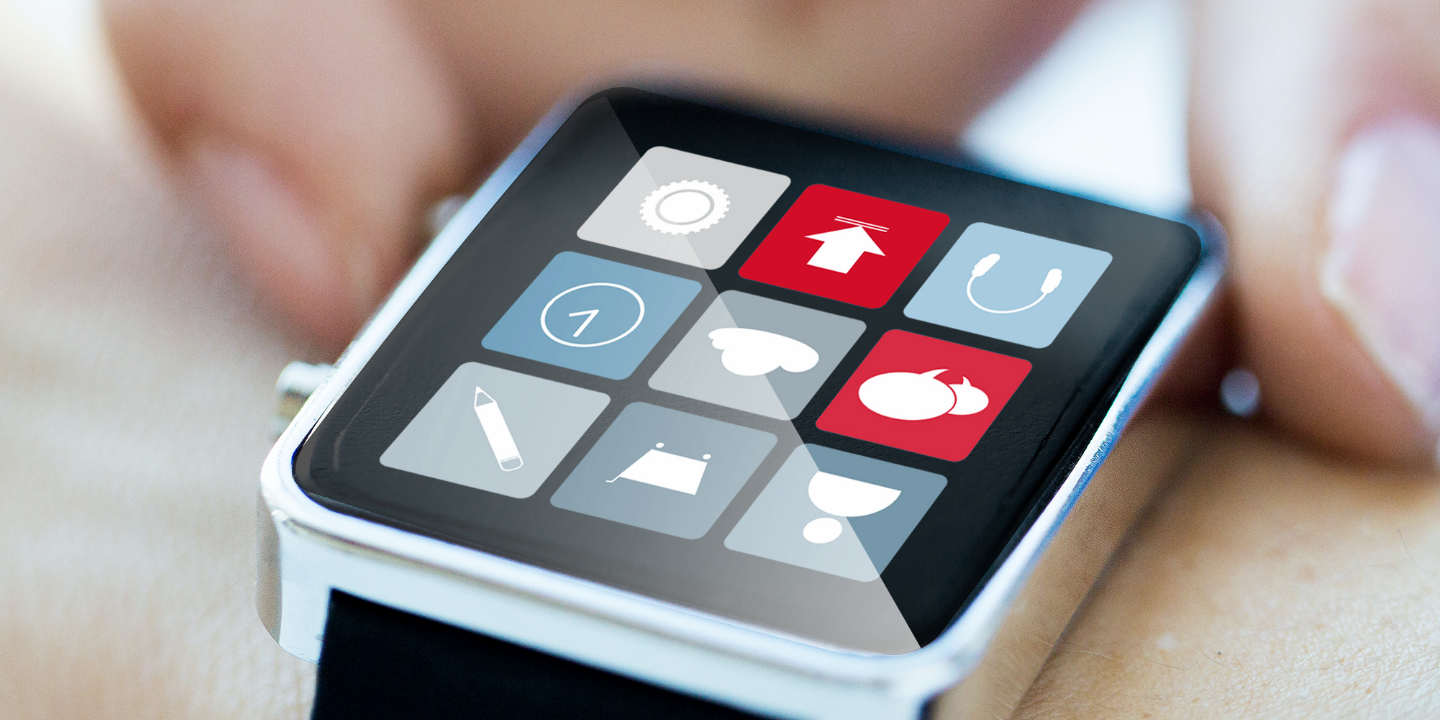
Alex Duin
Wearable technology – how smartwatches and glasses are the new frontier for content
If you're someone who thinks that technology has intruded too far in our lives, here's some bad news: it’s getting turned up another notch. 'Wearable' technology is all the rage, and soon enough you'll be sporting a computer on your wrist – or even your face. The possibilities for compelling content on these devices are endless – and soon you won't even notice you're wearing them.
In 1946 the ENIAC was one of the first computers in the world, a marvel of modern science and engineering. Housed in the University of Pennsylvania in the USA, it was used to calculate equations for building a hydrogen bomb, weighed over 24 tonnes and took up almost 65 cubic metres of space. Today, a computer thousands of times more powerful sits in your pocket.
Shrinking technology is a fact of life, and we can now carry it so easily that we forget it's even there. The new vogue for devices you can wear is the result: computers small enough to be attached to our body and always on hand. These go further than a smartphone that has to be fished out of a pocket or handbag – these are devices that are always available to consult on the smallest whim.
Activity trackers and smartwatches
The first wave at the consumer level were fitness trackers like the Nike+ FuelBand, the various products of Fitbit or –really niche – Push Snowboarding by Nokia and Burton. These took the form of clip-ons or wristbands that included pedometers, heart-rate monitors and other sensors for the purposes of keeping track of the granular details in your exercise. The data gathered would then be uploaded to a home computer or even smartphone to be analysed later.
Newer devices are now moving into the realm of lifelogging – tracking your activities and metrics even outside of workouts, to better form a picture of how to improve your overall health.
The next wave moved to revitalise one of the oldest gadgets of all – the watch. Maybe rendered obsolete to many by the mobile phone, it turns out the watch might have a killer app: the wrist. Smartwatches were kickstarted by the Pebble (which funnily enough was funded on Kickstarter), but it was soon joined by competitors like the Samsung Galaxy Gear, and it's long been rumoured that Apple are working on their own 'iWatch'.
Smartwatches combine many of the features of fitness trackers with a mini-smartphone that can run a number of basic apps, as well as, of course, display the time. Most smartwatches require a bluetooth connection with a compatible smartphone though, as they usually cannot access the internet or have large media storage by themselves. They're usually used as ways to easily and quickly interact with your phone without having to take it out of your pocket – controlling music playback, checking the identities of callers before picking up phone calls, previewing text messages and emails.
Google Glass and augmented reality
But the wrist is just the start of computers invading our clothes. 'Augmented reality' glasses have long been a staple of science-fiction: hi-tech machines that provided an information overlay to our vision that lets us see handy data all the time, depending on what's in front of us. So, GPS directions could simply float in the air, pointing at the way to go. Appointment details could appear in front of us as we approach the dentist, details of someone's Facebook page could appear as we talked to them.
This far-flung dream has finally become commercial reality with the release of Google's Glass. A small computer attached to the side of a pair of glasses (or just a headset frame), Glass is still a rather basic version of this aspiration. Showing a small screen in the corner of your vision rather than covering your whole view, it's still a while off the sci-fi ideal. But you can still get GPS directions, make and receive calls, read emails and texts, and a use host of other smartphone-like functions and apps, all without lifting a finger – the Glass is largely voice activated.
What does wearable tech mean for content creation?
So what are the content possibilities when you never have to let go of your tech? Here are some hints for the daring.
- Location, location, location.
Most wearable technology is either equipped with GPS itself or interacts with GPS-enabled smartphones. Either way, it can know exactly where the user is at any time, and often without the user having to explicitly check it. This can lead to some fantastic content opportunities, such as hyper-local advertising. - Keep it snappy.
Small size is what makes wearables possible, so don't expect to be able to fit War And Peace on a tiny screen. Even if the screens get bigger in the future, wearables are all about having key info available on the edges of your vision. Leave the treatises to your website. - Make it personal.
Wearable tech is capable of monitoring all sorts of tiny details about our lives, from our exercise schedules to anything glimpsed in Google Glass' head-mounted camera. There are privacy concerns of course, but with the participant's permission there is the chance to perfectly tailor your content to a person's life.
Alex Duin is a member of the Cypres blogging team. He has written for the BBC and many other companies. His specialty is technology and he is based in London.
For more information on creating micro-content, please contact Pieter Vereertbrugghen.



